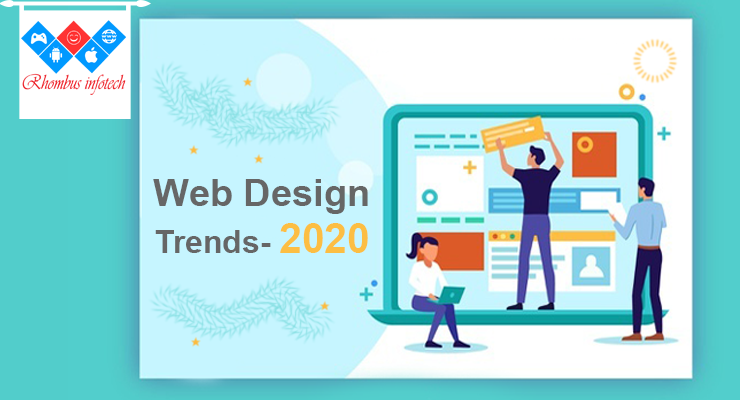Each industry is linked to specific trends. This is especially true for graphic design, marketing and, of course, web design. From the very beginning of the “technological revolution” you can track a lot of changes in the development of websites. Innovations expand opportunities. That is why they influence which sites we want to see. This is how new trends are formed.
There are a few things that are always in style, like quick load speed and responsive (mobile friendly) design. However, the elements below are modern and set to be big trends in 2020.
Microinteractions
As you might have guessed from the name, micro animations are small animations. But in this case, small doesn’t mean insignificant. Micro animations are extremely helpful when it comes to guiding users through their interactions with your website. They can also add an element of playfulness to your site.One of the latest web design trends for ecommerce sites is using micro animations to enhance the user experience and give shoppers a taste of what their products are like.
Organic Shapes
Geometric shapes were a big website design trend in 2019 but in 2020, it’s all about organic shapes. Organic or fluid shapes are anything that doesn’t involve straight lines. Think of the shapes that happen in nature, like hills or the way the edges of a lake or river are asymmetrical and winding.
Fluid shapes are a great way to break up sections of a website without harsh lines or angles. They’re also great to use in the background, like the way Android uses circles behind products on their homepage.
Voice
Voice technology is another trend experiencing rapid growth in adoption – its growth was a prediction offered by numerous people we spoke to!
This is partly a result of technology, like smart speakers, that many of us are becoming increasingly accustomed to having in our homes. “We live in the age of Siri and Alexa,” explains Taura Woolfe, of Woolfe Agency. “Audio controllers have become our friends and have dramatically changed our digital experience the past few years. (But) many companies have not yet adopted VUI onto their websites.
“As we continue to move into the future, VUI will enhance the UX by making navigating websites and completing online purchases easier than ever.”
Augmented Reality(AR)
This isn’t a new trend, however, it’s strengthening its position for years to come. For online fashion, jewellery and perhaps, even beauty retailers, this is a must! You don’t know what augmented reality is? This is a type of technology combining a computer generated image with your real-world view. Have you ever played the Pokemon Go game? That’s augmented reality right there. AR and VR (virtual reality) help online shoppers make a faster and better decision when buying products online.
User focus
It goes without saying that the most important person on any website is the user – but many expect the user focus to become even more pronounced in 2020.
The biggest web design trend you’re going to see take off in 2020 is the focus on the user.
Thinking through what the client is looking for or trying to solve by coming to your site—instead of a company pushing for what they hope the user will do—will be a much-needed departure from the old way of thinking about a site.
Minimalism (Flat Design)
Minimalism, sometimes called “flat design”, isn’t a new trend in web design, but it has typically been associated with a lot of white space (think Apple.) In 2020, we expect people will be experimenting with colorful minimalism. “It doesn’t have to be all white to be minimalist,” says Maxwell.
Bold Color
Colorful minimalism goes hand-in-hand with one of 2020’s biggest web design trends: color! Bold, bright, saturated colors help your brand stand out and goes against the soft neutrals that a lot of companies have chosen over the past few years.
Material Design
Material design is actually a design language introduced by Google back in 2014. Where traditional web design looks flat, material design is about using color and shadows to mimic the physical world and its textures.
The shadows on the Gmail envelope and the calendar are especially good examples of material design. It’s very subtle, but goes a long way in making the icons look three-dimensional. We expect to see a lot more material design in 2020!
By keeping an eye on the trends we’ve outlined in this article – and no doubt, plenty more! – you’ll give yourself the best possible chance of staying ahead of the curve, delighting your clients and doing awesome work for years to come.

